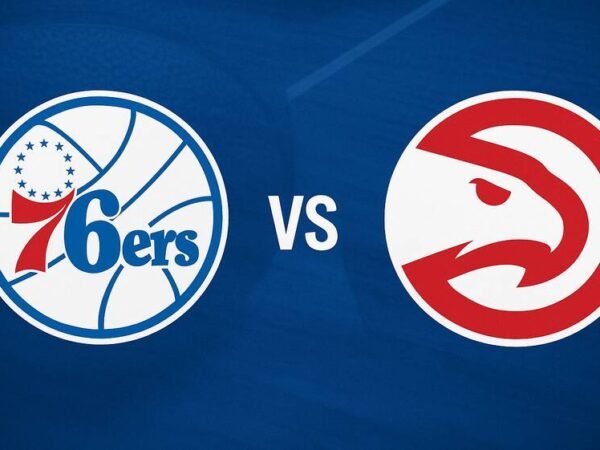The recent clash between the Los Angeles Lakers and the Utah Jazz offered an intriguing snapshot of the 2024 NBA season, showcasing notable performances, impressive teamwork, and moments of high-stakes decision-making. Held at the Jazz’s home venue, this game underscored the depth and adaptability of both teams in a highly competitive Western Conference. Ending with the Jazz narrowly securing victory at 132-125, the game featured standout contributions from both sides, especially in scoring, rebounds, and defensive intensity.
With such a close margin, this matchup was significant for both franchises. The Lakers, led by star players D’Angelo Russell and Anthony Davis, pushed the Jazz to the limit. At the same time, Utah capitalized on strategic rotations and contributions from players like Lauri Markkanen and John Collins. This article delves into the details of this thrilling match, breaking down the player stats and highlighting key elements that shaped the outcome.
Key Player Performances
Top Scorers
Scoring efficiency was on full display during this game. D’Angelo Russell emerged as the Lakers’ top scorer, tallying an impressive 39 points with a combination of intelligent shooting and strategic positioning. Russell’s scoring prowess kept the Lakers within striking distance despite the Jazz’s well-coordinated defense. Russell’s field goal percentage notably stood out, making him the go-to scorer in critical moments. His contribution kept the Lakers competitive and underscored his reliability as a clutch performer.
Lauri Markkanen stepped up for the Jazz, leading his team with 29 points. Markkanen’s scoring wasn’t only a personal achievement but an essential component of the Jazz’s offensive scheme. His points came from close-range shots and timely three-pointers, helping Utah stretch the Lakers’ defense and find openings. Markkanen’s shooting was crucial in the game’s final minutes, as he sank high-pressure shots to solidify Utah’s lead. His efficient performance and accurate shooting gave the Jazz the edge they needed to secure the win.
Rebounds and Assists Leaders
The battle on the boards was another critical aspect of the game, with both teams displaying determination and physicality. Lakers’ center Anthony Davis was a defensive force, grabbing 15 rebounds throughout the game. His presence in the paint made it difficult for the Jazz to secure second-chance points, showcasing his importance in the Lakers’ defensive scheme. Additionally, Davis contributed 11 assists, proving his versatility and ability to facilitate plays even when his scoring was not at its peak.
On the Jazz side, John Collins’ rebounding efforts were instrumental, collecting 13 rebounds and offering his team the advantage in possession. This effort on the glass gave Utah multiple opportunities to set up high-quality shots, preventing the Lakers from gaining momentum. The Jazz’s assists, distributed across various players, highlighted their balanced approach and strong communication. This collaborative play helped them exploit gaps in the Lakers’ defense, adding a strategic layer to their gameplay.
Shooting Efficiency
In high-stakes games, shooting percentages often determine the outcome, and this matchup was no exception. The Lakers demonstrated a solid shooting performance, with a field goal percentage that reached 50%. Their three-point accuracy was equally impressive, making them a credible threat from beyond the arc. Russell’s and Austin Reaves’ shooting helped keep the Lakers in contention, as both guards contributed significantly to their outside shooting game.
The Jazz, however, countered with their efficient shooting. They capitalized on high-quality shot selection, maintaining composure in moments that required precise execution. Markkanen’s shooting percentage was a standout factor, as his well-placed shots allowed the Jazz to edge out the Lakers by a small but crucial margin. This efficiency, combined with timely three-point contributions, created separation on the scoreboard during critical junctures of the game.
Team Dynamics and Bench Impact
Lakers’ Bench Contributions
The Lakers’ bench played a pivotal role in keeping the game close. Rui Hachimura and Christian Wood were standout performers, each contributing double-digit points off the bench. Hachimura’s inside game and Wood’s rebounding added a layer of resilience to the Lakers’ lineup. Their performances highlighted the Lakers’ depth, showing the team has multiple scoring options even when the starters are resting. This depth kept the Lakers competitive and allowed them to keep up with the Jazz despite challenges.
While part of the starting lineup, Austin Reaves played a role similar to that of a bench spark. He made efficient shots and helped shift the momentum back in the Lakers’ favor during critical moments. His shooting percentage was remarkably high, adding essential support to the primary scorers and keeping the Lakers within striking distance.
Utah’s Rotational Strategy
For the Jazz, a well-orchestrated rotation strategy gave them an edge in consistency and defensive stamina. Coach Will Hardy implemented strategic substitutions, enabling the Jazz to keep fresh legs on the court and maintain their defensive pressure. The rotations also allowed Utah to exploit mismatches and challenge the Lakers’ defense at different points in the game. With Markkanen and Collins leading the charge, the Jazz relied on consistent bench contributions to counter the Lakers’ scoring surges.
Utah’s bench players, including critical substitutes who added valuable minutes, demonstrated the strength of the Jazz’s depth. By leveraging this rotational approach, Utah maintained a high energy level, especially during the fourth quarter, when defensive stops became paramount to preserving their lead.
Defensive Analysis
The game’s defensive aspects revealed a lot about both teams’ strengths and areas for improvement. The Lakers showcased impressive shot-blocking, with Anthony Davis leading the way with four blocks. This defensive skill limited the Jazz’s ability to drive to the basket and put pressure on their perimeter shooting. Davis’s blocks were defensive highlights and momentum shifters, giving the Lakers opportunities to score in transition.
John Collins was a defensive anchor on the Jazz’s side, leading the team with three steals and a solid rebounding presence. Collins’ ability to disrupt the Lakers’ plays and create turnovers was crucial in sustaining Utah’s lead. The Jazz’s overall defensive effort was a team endeavor, with multiple players contributing to steals and blocks. This collective approach kept the Lakers’ offense in check and limited their high-percentage scoring chances.
Turnovers were another critical factor in the game’s defensive narrative. The Lakers struggled with turnovers, which ultimately proved costly. The Jazz capitalized on these mistakes, converting them into fast-break points and maintaining their advantage. The ability of both teams to exploit each other’s defensive lapses made for a thrilling, back-and-forth contest.
Statistical Summary and Insights
Reflecting on the stats, the game’s momentum swings were heavily influenced by shooting efficiency, rebounds, and defensive plays. The Lakers’ 50% shooting from the field allowed them to stay competitive. Still, the Jazz’s strategic plays and defensive stops in the closing minutes proved decisive. The Jazz’s slightly better shooting from beyond the arc also played a role in keeping their lead.
From a tactical perspective, the Lakers’ reliance on Davis and Russell highlighted the need for more balanced scoring from the roster. Meanwhile, Utah’s distributed scoring and effective bench utilization underscored their resilience and adaptability, mainly when the game was on the line.
Predictions for Future Matchups
Based on this game’s statistics and dynamics, future matchups between the Lakers and Jazz will likely hinge on bench performance, shooting consistency, and turnover management. The Lakers may focus on reducing turnovers and increasing bench scoring to avoid over-relying on their stars. On the other hand, the Jazz will likely aim to continue their rotational strategy, giving key players rest and maintaining defensive intensity.
Both teams demonstrated areas of improvement, especially in defensive rotations and handling pressure during closing moments. As they refine these aspects, their upcoming encounters promise to be just as competitive and exhilarating.
Conclusion
The Lakers vs. Utah Jazz game offered a thrilling glimpse into the NBA 2024 season, with each team showcasing its strengths and resilience. Both teams had moments of excellence, from D’Angelo Russell’s scoring spree to Lauri Markkanen’s efficient shooting. The Lakers’ defensive efforts, led by Anthony Davis, highlighted their commitment to protecting the paint. At the same time, the Jazz’s balanced scoring and strategic rotations ultimately sealed their victory.
This matchup underscored the importance of bench depth, shooting efficiency, and defensive coordination, all of which will continue to influence the outcomes of future games. With both teams positioned as strong contenders in the Western Conference, the Lakers vs. Jazz rivalry is shaping to be a storyline to watch as the season unfolds.
Do Read: Denver Nuggets vs Golden State Warriors Match Player Stats












